Diabetic neuropathy is damage to nerves that occurs as a result of diabetes.Different types of diabetic neuropathy include peripheral neuropathy, focal neuropathy, autonomic neuropathy, and proximal neuropathy
How is peripheral neuropathy diagnosed?
The symptoms of peripheral neuropathy are highly variable. A thorough neurological examination is required to sort out the cause of the symptoms and involves taking an extensive medical history (covering symptoms, work environment, social habits, exposure to toxins, alcohol use, risk of HIV or other infectious diseases, and family history of neurological diseases).
Physical examination and various tests
Evaluation of the person’s ability to sense vibration, light touch, body position, temperature, and pain reveals any sensory nerve damage and may indicate whether small or large sensory nerve fibers are affected.
Blood Tests
Blood tests can detect diabetes, vitamin deficiencies, liver or kidney dysfunction, other metabolic disorders, and signs of abnormal immune system activity. Genetic tests are becoming available for a number of the inherited neuropathies.
Based on the results of the neurological exam, physical exam, patient history, and any previous screening or testing, the following additional tests may be ordered to help determine the nature and extent of the neuropathy:
- Nerve conduction velocity (NCV): tests can measure the degree of damage in large nerve fibers. During this test, a probe electrically stimulates a nerve fiber, which responds by generating its own electrical impulse. Slow transmission rates and impulse blockage tend to indicate damage to the myelin sheath, while a reduction in the strength of impulses at normal speeds is a sign of axonal degeneration.
- Electromyography (EMG): involves inserting a fine needle into a muscle to record electrical activity when muscles are at rest and when they contract. EMG tests detect abnormal electrical activity in motor neuropathy and can help differentiate between muscle and nerve disorders.
- Magnetic resonance imaging (MRI) : can show muscle quality and size, detect fatty replacement of muscle tissue, and can help rule out tumors, herniated discs, or other abnormalities that may be causing the neuropathy.
- Nerve biopsy : involves removing and examining a sample of nerve tissue, most often from the lower leg.
- Skin biopsy : is a test in which doctors remove a thin skin sample and examine nerve fiber endings. This test offers some unique advantages over NCV tests and nerve biopsy.
Who can help?WE CAN HELP!
Treatment with Peripheral Neuropathy at Centers of Rehabilitation and Pain Medicine
We use local anesthetic blocks in conjunction with electric cell signaling treatment to successfully treat neuropathies of all causes. This treatment is a safe and effective therapy for all forms of neuropathy.
See results after the first 5-8 injections! Call for a FREE consultation 714-676-1884.

